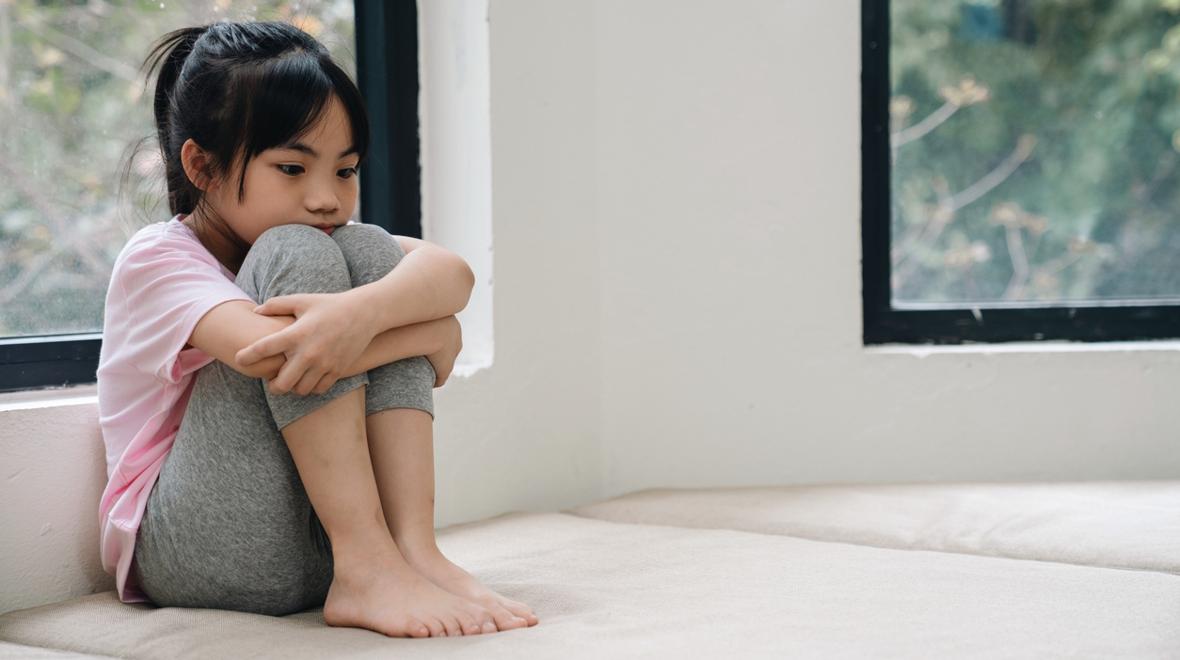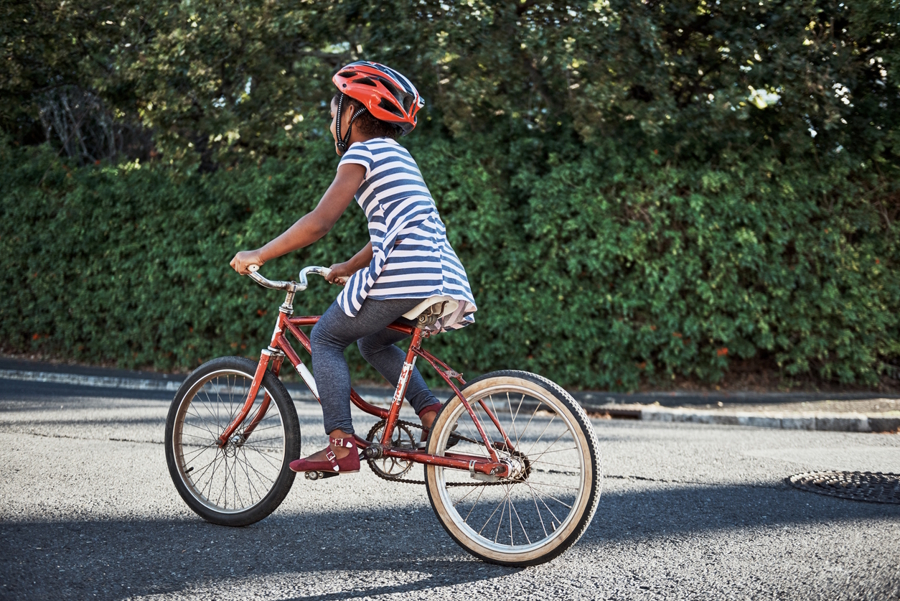
Photo:
iStock
The other day, I met with the parents of a 14-year-old boy — let’s call him Jeremy. He was a good kid: decent grades, no major behavioral issues. But he was stuck. No sports or clubs. No in-person friends, just online gaming buddies. His parents were worried. He was moody, isolating and resistant to every suggestion. His go-to phrase? “I’m fine — except that you’re always on my back.”
Jeremy had what I call “I duwanna” syndrome: I don’t want to try new things, leave the house or engage with real life. His frustrated parents referred to him as lazy, unmotivated and belligerent. But Jeremy came by his condition honestly. He had been allowed to not face challenges for all of middle school, preferring home and his computer. My strong hunch — Jeremy wouldn’t be persuaded to do more stuff if his parents forced him into individual therapy.
Like Jeremy, many children aren’t diagnosable (yet?) with anxiety or depression, but they’re clearly languishing — lacking challenge, joy and real-world experiences. Some start out with shy or anxious temperaments. Others drift into avoidance during the tween years, especially during and after the pandemic, as screens and social media became their primary world.
If you suspect your child is showing signs of a diagnosable mental disorder, of course consult a professional. But for many kids in the languishing zone, the root problem may be too little exposure to challenge, independence and practice tolerating temporary discomfort.
You can’t talk someone out of their fears of new things. They need to experience that it is safe in their bodies and brains.
Kids grow through some discomfort
All humans, especially children, are wired to experience distress, frustration and challenge. It’s through exposure to this kind of stress — a state of physiological arousal which can feel intensely unpleasant — that we build resilience. When we face novel or difficult experiences, our bodies activate a stress response, preparing us to deal with potential threats. But for many anxious and avoidant people, the threat detector in their brains trigger a lot of false alarms. However, the new experience isn’t dangerous — it is challenging.
You can’t talk someone out of their fears of new things. They need to experience that it is safe in their bodies and brains. They need to stay in the situation while the stress rises and falls in the context of the scary new thing. As long as we avoid overwhelm or trauma, these experiences show us that arousal is bearable and discomfort isn't dangerous. Over time, this builds confidence and competence.
Unfortunately, many well-meaning parents, eager to reduce their child’s distress, rush in to fix problems too quickly. Instead of offering support through the difficulty, we sometimes rescue our kids from it and relieve ourselves of the discomfort of watching them struggle. If we rescue the child in the midst of their struggle, they experience huge relief and reinforcement. What have they learned? Pitch a fit and you get out of stressful new things! This kind of accommodation can inadvertently reinforce fear and avoidance, sending the message that distress is intolerable and must be avoided.
Of course it’s hard to watch your child sob on the first day of day camp. But most parents have heard some version of, “She was fine 10 minutes after you left — once she grabbed the fingerpaints,” like I did.
The paintball epiphany
In Jeremy’s case, I recommended a radical pivot — stop arguing and start asking. Ask what independent activity he might want to try. Jeremy told his parents he would be willing to go play paintball with his dad. His parents were horrified. Guns? War play? But after learning about the logic behind independence therapy, they let him join a youth paintball league.
That one yes changed everything. Jeremy lit up. He started socializing in person. He joined weekend competitions with some great kids and families. Eventually, he tried Ultimate at his high school. In the end, I never met Jeremy — just his brave, open-minded parents.
What helped wasn’t a pep talk or a therapy session. It was independence. Safe risk-taking. Real-life friends. And fun.
Independence: The antidote to avoidance
The languishing kids I hear about are bright, digitally fluent, often sensitive — and often overwhelmed by basic tasks. Some ace standardized tests but can’t walk two blocks alone or call to order a pizza.
It’s easy to pathologize these behaviors. But more often than not, these kids don’t need therapy. They need challenge. They need to practice doing age-appropriate, independent activities they choose themselves. When they do, their confidence grows.

Why talking about anxiety can make it worse
Conventional wisdom says talk it out. And yes, that helps sometimes. But for kids avoiding everyday challenges, constant discussion can reinforce the fear. Rehearsing worries strengthens neural pathways. It wires the “fear network” tighter.
A note of caution: Kids with diagnosable anxiety do benefit from therapy, especially exposure-based therapies and family involvement. These kids also have the “I duwanna” syndrome, but on steroids, with protests fired at both parents and therapists alike. Psychotherapy will require parent involvement and probably include many approaches.
For the many kids who don’t have diagnosable conditions but are still avoidant, action is often better than talking. Let them choose a goal that feels adventurous and desirable, even a little scary, for themselves, and back them up. Remember, the experience is what teaches them resilience, not reassurance and talk.
I once worked with the parents of an 8-year-old who was afraid to go upstairs alone. She wouldn’t take a shower without her parents sitting outside the door. Instead of tackling that fear directly, they started encouraging independence in other ways. She chose to walk to a friend’s house alone. Then she wanted to cook an omelet — unsupervised. As the parents stretched their own tolerance, so did she. She now goes upstairs alone.
The key to success is listening to the child and figuring out what they want to try which represents independence.
Independence therapy: A research-backed approach
Psychologist Camilo Ortiz coined the term “independence therapy.” His research shows that just five sessions focused on supporting independence, not reducing fear per se, can transform anxious kids. The key to success is listening to the child and figuring out what they want to try which represents independence.
The first venture might be baby steps. One time, the parents I was counseling agreed that their 10 year old, who had refused all play dates and peer activities, could pogo stick on the driveway without parents looking through the window. Later, pogo play included a friend in the cul-de-sac. She blossomed from there.
Parents have to show as much courage as the children. Their mission is calming their own brains’ threat detectors. If they don’t supervise, what is the worst thing that could happen? A broken arm? I had two: in third and ninth grade — how about you? Most of us have great memories of independent play with a gaggle of kids in the neighborhood. And our excuse for not recreating this opportunity? It’s a dangerous world out there.
But, is it?
A crisis decades in the making
Widespread languishing from excess indoor time isn’t just a pandemic or TikTok problem. In the 1980s and ‘90s, media fearmongering about child abductions reshaped parenting. Though stranger danger was wildly exaggerated, it led to a cultural shift: more supervision, less freedom for kids.
Over time, parents developed the idea that kids were safer inside than outside. That smart phones were less dangerous than playing independently at a playground. That peer interaction over social media was a good substitute for free-range roaming at the mall. Not so.
Childhood became an indoor, adult-managed affair. Childhood became the opposite of free play: intensive academics, professionalized sports and supervised spaces. As Peter Gray, Lenore Skenazy and Jonathan Haidt argue, kids now grow up with too little exposure to the Four D’s: discomfort, disappointment, distress and (mild) danger.
These days, parents’ false-alarm brains can be as overactive as their children’s — they worry about strangers and crime. But compared to the risk of languishing, the true risk of crime or other harms resulting from your kids practicing independence is miniscule.
As Sandseter says, kids should be “as safe as necessary, not as safe as possible.”
The science of risky play
Neuroscientist Ellen Sandseter’s work on risky play shows that roughhousing, climbing, wandering and exploring help kids regulate stress. They learn they can survive fear, recover and adapt. These activities build the emotional scaffolding for resilience.
As Sandseter says, kids should be “as safe as necessary, not as safe as possible.” The point isn’t to push kids into scary situations; it’s to let them access the growth experiences that modern childhood has erased.
Parents aren’t the problem — but we are the solution
Today’s parents are more loving and attuned than any generation before. But our empathy can tip into over-accommodation. We allow avoidance of hard things — social discomfort, chores, unfamiliar settings — because it feels cruel not to. But when we do, we teach kids their discomfort is dangerous, and retreat is the solution.
Many parents I meet want their children to face fears, yet they struggle to face their own. When kids say, “I don’t want to walk to school alone,” parents feel their own alarm bells go off. But what we perceive as safe (constant supervision) may actually be harmful, and what we see as risky (independent play, biking to a friend’s house) is often exactly what kids need to grow.
Languishing is dangerous. I’ve always said that kids are like dogs — every year represents seven years of development, because so much social and emotional development happens through experiencing life challenges. Otherwise, they are truly at risk for developmental delay, which we usually associate with intellectual disability. We would be horrified to risk such intellectual delay, but are we willing to risk the hindered development of their social skills, resilience and emotional muscles? They need to move their bodies and play like dogs too — rough and joyful and wild. Exercise and peer play are like magic potions for well-being.
The question isn’t just “Is this safe?” It’s also “Is this necessary?” Because resilience, confidence and competence don’t come from watching YouTube videos or playing Minecraft. They come from real-life experience.
This isn’t just a parenting tweak — it’s a public health campaign.
A movement, not just a method
This isn’t just a parenting tweak — it’s a public health campaign. Haidt, Skenazy and others are calling for a cultural shift. One parent saying yes to independence is a rebel. A community saying yes is an organized movement!
Organizations like Let Grow make it easy to get started. Their Play Clubs provide device-free, mixed-age, old-fashioned recess fun. Schools should adopt them, not just add therapists. And kids should get “independence homework,” reporting back on their self-chosen adventures.
Why not? AA uses peer support to promote abstinence from alcohol overuse. Let’s try a new kind of AA: Abstinence from Avoidance.
What parents can do today
- Check out the Let Grow Inspired Independence Starter Kit.
- Ask, don’t assume. What independent activity does your child want to try?
- Start small. Walk to the neighbor’s house. Make breakfast solo. Shop for school supplies.
- Say yes more. Even if it scares you. Especially if it scares you.
- Encourage reasonable risk. Tree climbing, biking, fort-building — it all counts.
- Create device-free zones for unstructured play.
- Team up. Join forces with other parents. Normalize independence.
The takeaway
Kids need autonomy, competence and connection. Independent activities are like a multivitamin! When kids get to try something hard — especially something they chose — the growth is profound.
This isn’t a magic fix. It’s a mindset shift. But it works. And parents are the key.
So next time your child resists a challenge, resist the urge to explain, persuade or pressure. Instead, ask: “What would you like to try on your own?” Support it. Step back. And watch them grow.
And when you feel tempted to tell your kid to get off screens and do something healthy, pause and ask yourself: You might be right, but are you effective? Try W.A.I.T. (Why Am I Talking?) Then try a different tack. Ask what they’d like to try on their own. It might just spark a change.











